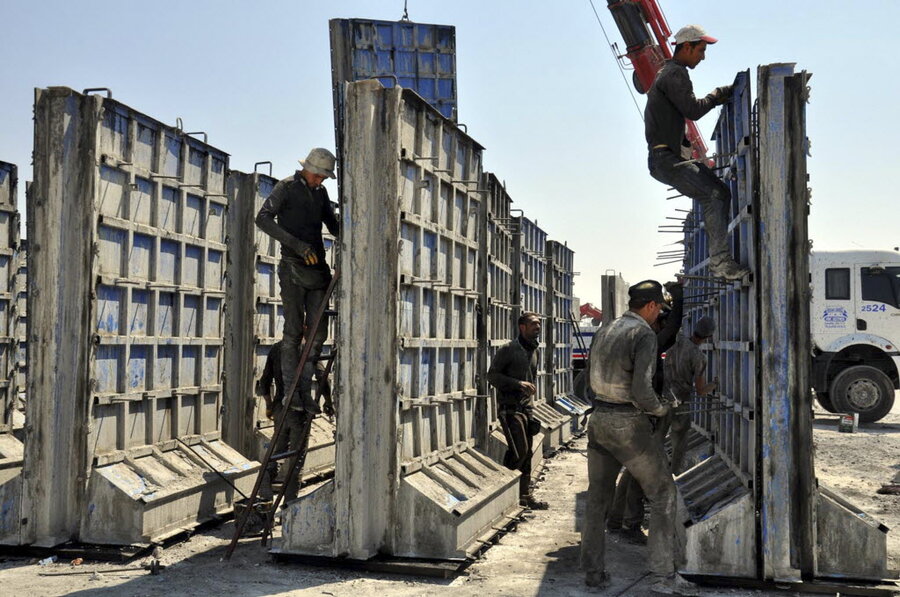The global call for more border walls
Loading...
If he were to occupy the Oval Office, Donald Trump promises to build a “beautiful” wall along the entire US-Mexican border. Not to be outdone as a fellow GOP presidential hopeful, Wisconsin Gov. Scott Walker says he is willing to “look at” putting a wall on the US-Canadian border – the longest border between countries in the world. Such campaign talk about building a Fortress America may seem odd to the rest of the world. Yet the United States could be joining a trend. The number of nations placing walls, fences, or other physical barriers on their borders is on the rise.
Hungary is the latest country to tighten up its borders. It plans a 13-foot-high fence in response to tens of thousands of refugees coming across from neighboring Serbia so far this year, most of them from the Middle East and Africa. Last year, Bulgaria began to erect a fence along its border with Turkey to keep out migrants. And for a different reason, Estonia announced in August that it will build a wall on its border with Russia – to prevent political meddling by a more-threatening Moscow.
These cases follow recent projects in Israel, Iran, India, Saudi Arabia, Spain, Kenya, and elsewhere in the attempt to curb either terrorists, criminals, or migrants with hardened borders.
In the past two decades, the number of nations building barriers has tripled, according to researchers, reaching nearly a third of all countries. The flow of legal crossings worldwide may be up, as is the flow of digital information, money, and traded goods. But the perception of cross-border threats is also increasing. And many politicians like Mr. Trump are responding with promises of impenetrable borders.
Is raising such a hope realistic? Experts say that walls – whose history goes back nearly 4,000 years – have a dubious record. They often merely divert migration elsewhere and make it more dangerous. The limited length of walls put up along the US-Mexican border may have kept many undocumented workers in the US. In the case of Israel’s West Bank barrier, which began to be built in 2002, it remains unclear if it has contributed to a decline in terrorist attacks or whether policies by Palestinian and Israeli officials did.
Border barriers can have unintended consequences. They may forestall peacebuilding and reinforce differences. By enclosing a country, they are a signal of fear of the other and a symbol of mutual distrust and defined differences.
In some cases, such as the “peace walls” built between Northern Ireland neighborhoods, what was once meant to restrain a conflict has come to define it, and even deterred reconciliation.
Border walls can serve as a symbol for a country by collectively sharpening its identity and create the impression of a sanctuary. But they also may prevent a country from dealing with the root causes of illegal migration, such as poverty and war. The best long-range solution is for countries to work with each other in tackling core problems and share information on potential threats, such as drug cartels or terrorist suspects.
The concept of the nation-state and the need for inviolable borders is not going away anytime soon. Yet with globalization only increasing, the answer to security threats, perceived or real, is usually more cooperation, not more fortification.







